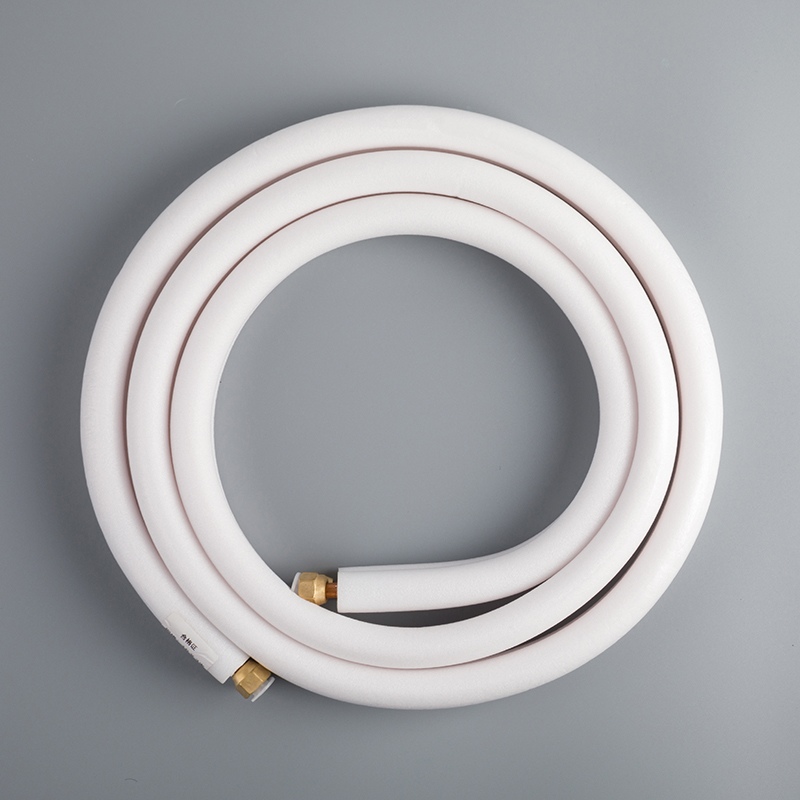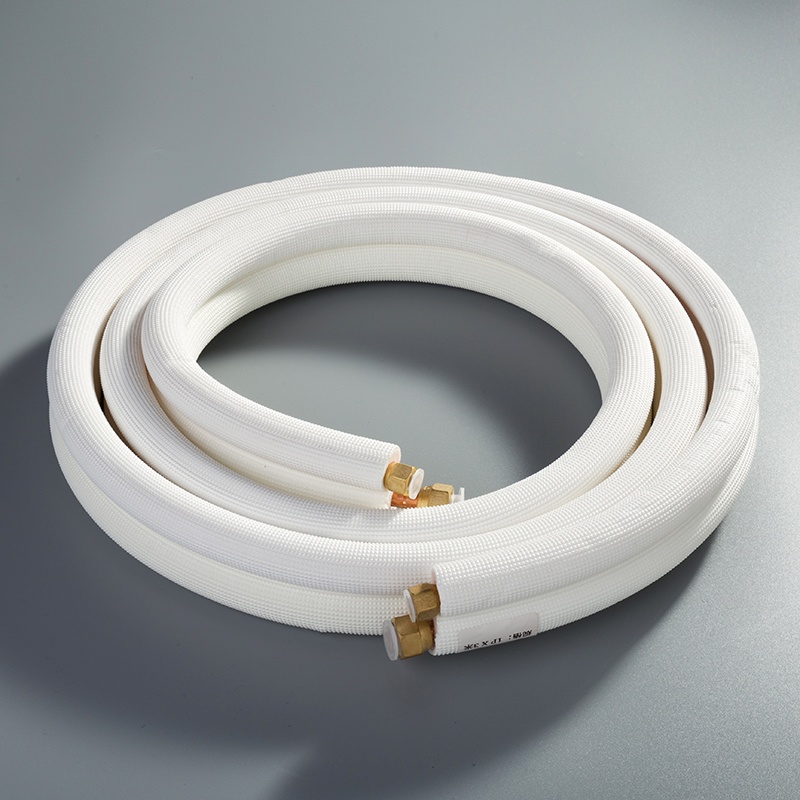Easy Steps to Fix Copper Pipe Leaks Quickly
When it comes to your home's plumbing, addressing how to fix copper pipe leak promptly is crucial. Not only can these leaks lead to water damage and costly repairs, but they can also go unnoticed for a long time. By understanding the various methods to fix a 1 2 inch copper pi quickly, you can prevent further issues and maintain the integrity of your plumbing system. Discover the benefits of swift action and how simple fixes can make a significant difference in safeguarding your home. Additionally, knowing the differences between PEX pipe vs copper can help you make informed decisions for repairs. For instance, Type K copper pipe is known for its thicker walls, making it suitable for certain applications. Understanding the properties of pipe copper can further aid in effective plumbing maintenance.
Identifying the Leak

Signs of a Leak
Water Stains
Look for water stains on walls or ceilings, indicating a potential leak in your copper pipes. These stains may appear as discolored patches or streaks, signaling water seepage from a hidden source.
Reduced Water Pressure
Notice any reduced water pressure in your faucets or showerheads, which could be a symptom of a copper pipe leak. A decrease in water flow might suggest an obstruction caused by a leak within the plumbing system.
Pressurizing the Pipe
Using a Pressure Gauge
Employ a pressure gauge to assess the integrity of your copper pipes. By pressurizing the system, you can detect leaks more effectively and pinpoint areas that require immediate attention.
Observing Pressure Loss
Monitor the pressure levels over time to identify any pressure loss, indicating possible leaks in the pipes. Consistent pressure drop signifies an issue that needs prompt resolution to prevent further damage.
By recognizing these signs and conducting pressure tests, you can swiftly determine if your copper pipes are leaking and take necessary steps to address them promptly. Remember, early detection and proactive measures are key to maintaining a reliable plumbing system in your home.
Temporary Fixes
Using Rubber Hose and Clamps
Cutting the Pipe
Begin by cutting the copper pipe at the leak using a pipe cutter to ensure a clean and precise cut.
Remove any burrs or rough edges from the cut area with sandpaper to create a smooth surface for repair.
Applying the Hose and Clamps
Wrap the leak area tightly with a self-fusing silicone repair tape to form a solid, watertight seal around the joint.
Secure the repair by placing hose clamps over the tape, ensuring they are tightened adequately to prevent any leaks.
Using Epoxy Putty
Preparing the Surface
Clean and dry the damaged section of the copper pipe thoroughly before applying the epoxy putty for optimal adhesion.
Ensure there is no moisture present on the surface as it can affect the effectiveness of the putty.
Applying the Putty
Knead an appropriate amount of epoxy putty until it forms a uniform color, indicating thorough mixing of its components.
Apply the putty over the leak area, molding it to cover and seal any cracks or holes in the copper pipe effectively.
Utilize these temporary fixes as interim solutions to address copper pipe leaks promptly before implementing permanent repairs. Remember that while these methods can provide immediate relief, long-term solutions such as replacing sections with PEX pipes or using SharkBite fittings may be necessary for lasting results in maintaining your plumbing system's integrity.
Permanent Fixes

Using SharkBite Fittings
Cutting and Cleaning the Pipe
Begin by measuring the copper pipe precisely at the leak location to determine the length needed for replacement.
Cut the damaged section of the copper pipe using a pipe cutter, ensuring a clean and straight cut without any burrs.
Clean both ends of the cut pipe thoroughly with a cleaning tool to remove any debris or oxidation for a secure connection.
Installing the Fittings
Slide one end of the SharkBite fitting onto each cleaned pipe end until you feel it securely lock in place.
Check that both fittings are aligned correctly with their respective pipes before proceeding.
Push the fittings firmly together until you hear a distinctive click, indicating a successful connection without the need for soldering.
Replacing with PEX
Cutting the Copper Pipe
Use a pipe cutter to make a clean and precise cut on both sides of the damaged section, ensuring they are straight and free from imperfections.
Measure and mark the copper pipe accurately before cutting to guarantee a seamless transition to PEX piping.
Connecting PEX to Copper
Slide a copper crimp ring onto one end of the PEX tubing, followed by an insert fitting to ensure a watertight seal.
Insert the PEX tubing into one side of a SharkBite slip coupling, then slide back the coupling's locking mechanism to secure it in place.
Repeat this process on the other end, verifying that all connections are tight and leak-free before restoring water flow for efficient plumbing performance.
Comparing Pipe Options
PEX Pipe vs Copper
Cost Comparison
When comparing PEX pipe to copper, it's essential to consider the cost implications. PEX pipes are generally more budget-friendly than copper pipes due to their lower material costs and easier installation, making them a cost-effective choice for plumbing repairs.
Ease of Installation
The ease of installation is a significant factor when deciding between PEX pipe and copper. PEX pipes are known for their flexibility and simple installation process, requiring fewer tools and time compared to traditional copper pipes, which often involve soldering and precise fittings.
Types of Copper Pipes
Type K Copper Pipe
Understanding the differences between copper pipe types is crucial. Type K copper pipe stands out for its thicker walls, making it suitable for underground applications or where durability is paramount. Its robust construction ensures long-term reliability in demanding environments.
Type L and M Copper Pipes
In contrast, Type L and M copper pipes offer varying thicknesses suited for different purposes. While Type L provides a balance between strength and cost-effectiveness, Type M is thinner and more affordable but may be prone to damage in high-pressure systems.
Choosing the Right Size
1 2 Inch Copper Pipe
Selecting the correct size of a copper pipe is vital for efficient plumbing systems. A 1 2 inch copper pipe is commonly used for residential water supply lines due to its adequate flow capacity while maintaining structural integrity. Ensuring the right size prevents pressure issues and guarantees optimal performance.
Other Sizes
Apart from standard sizes like 1 2 inch, copper pipes come in various dimensions to accommodate specific needs. Whether it's larger diameters for industrial applications or smaller sizes for intricate installations, choosing the appropriate size ensures seamless integration into your plumbing network.
Testimonials:
Property Owner:
The repair was completed in under 30 minutes. The property owner said afterwards had they known that fixing a leaking joint could be so straightforward, they would never have ignored the leak or left the problem unrepaired for so long.
Property Owner:
After ignoring a leaking joint on a badly soldered copper pipe for a prolonged period of time, a property owner was spurred into carrying out a repair once it became known that escaping water had begun rotting wooden floorboards and a joist underneath the leak area.
In conclusion, swiftly addressing copper pipe leaks is crucial to prevent extensive damage to your home. By utilizing temporary fixes like rubber hose and clamps or epoxy putty, you can quickly mend leaks before implementing permanent solutions such as SharkBite fittings or transitioning to PEX pipes. Remember, choosing the right materials is essential for effective repairs and long-term maintenance. Stay proactive in maintaining your plumbing system to avoid costly repairs in the future.
See Also
Simple Solutions for Copper Pipe Coil Issues
Quick Guide to Installing Copper Pipe Coils
5 Ways to Cut Air Conditioner Copper Tube Expenses


